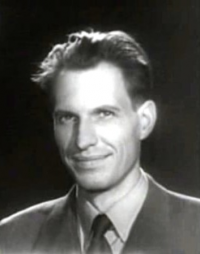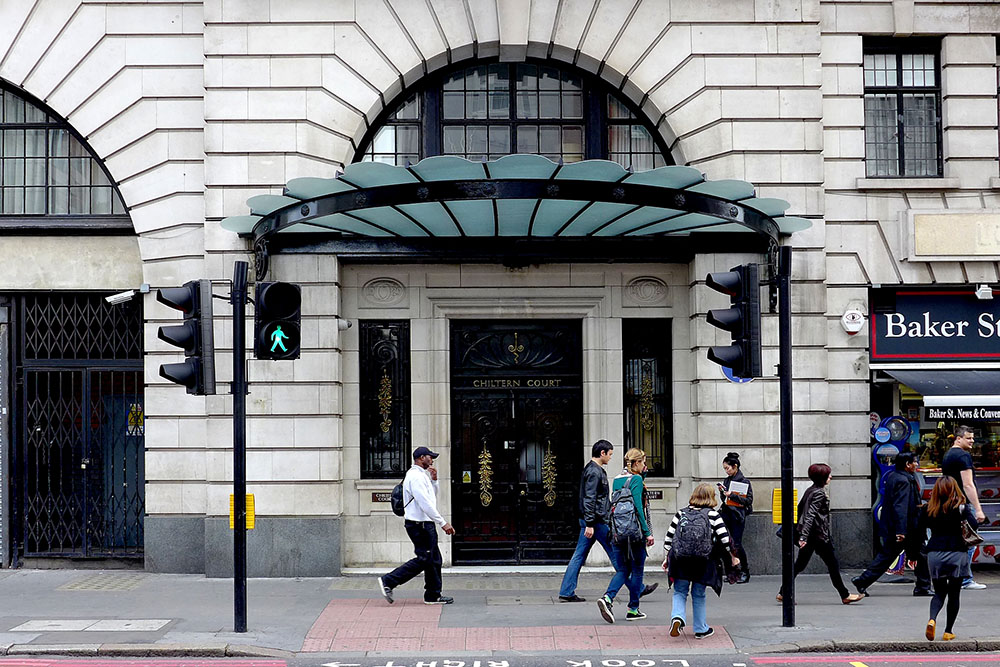Haugland, Knut Magne
- Date of birth:
- September 23rd, 1917 (Rjukan/Telemark, Norway)
- Date of death:
- December 25th, 2009
- Nationality:
- Norwegian
Biography
Knut Haugland was a wireless operator in the Norwegian Army when war broke out. After the occcupation by the Germans he was temporarily employed by a factory in Oslo producing radios; he also became actively involved in the resistance. After being arrested by the occupying force, he managed to escape and made his way to England via Sweden. In England he was recruited by the Special Operations Executive (SOE). He was dropped in Norway in preparation for Operation Grouse, an action against a German factory producing heavy water in Norway. The operation was canceled as the glider, carrying the British saboteurs, crashed. Haugland spent the winter in Norway in deplorable conditions, waiting for a second group which did succeed in sabotaging the production of heavy water. The action, called Operation Gunnerside, was made into a motion picture called "Heroes of Telemark". Haugland remained active in the SOE for the duration of the war, alternating actions in Norway with training in England. In 1944 he met Thor Heyerdahl who called him just after the war to join him on a scientific journey which was to become famous as the Kon-Tiki expedition.
After the expedition, Haugland returned to the Norwegian Army. Later in life he became the director of the Museum of Norwegian Resistance and the Kon-Tiki Museum. Dissatisfied with the making of the motion picture about the succesful raid on the German factory of heavy water, Haugland cooperated in 2003 with survival expert Ray Mears in a documentary entitled: "The real heroes of Telemark".
Do you have more information about this person? Inform us!
- Period:
- Second World War (1939-1945)
- Rank:
- Fenrik (2nd Lieutenant)
- Unit:
- Norwegian Independent Company 1, S Section, Special Operations Executive (SOE), British Government
- Awarded on:
- April 26th, 1943
- Awarded for:
- Operation Gunnerside
- Period:
- Second World War (1939-1945)
- Rank:
- Fenrik (2nd Lieutenant)
- Unit:
- Norwegian Independent Company 1, S Section, Special Operations Executive (SOE), British Government
- Awarded on:
- June 11th, 1943
- Awarded for:
- Operation Grouse
With sword on ribbon
- Period:
- Second World War (1939-1945)
- Rank:
- Fenrik (2nd Lieutenant)
- Unit:
- S Section, Special Operations Executive (SOE), British Government
- Awarded on:
- 1944
"This Officer was awarded the M.C. for the services he rendered in connection with the important "Gunnerside" Operation in February, 1943. He had been the W/T Operator of the advance party since October, 1942, and he remained in the mountains to report results and enemy movements and reactions until July, 1943. He was evacuated to OSLO with peritonitis, and when recovered, was brought back to the U.K. During his convalesence in OSLO he was in contact with th H.Q. Staff of the Secret Military Organisation, and was able to bring back a clear report of their communication requirements.
Less than three months later Lieut. Haugland was sent back to NORWAY in order to set up direct W/T communication with S.M.O. H.Q., and to advise the staff on wireless technical matters. Three previous flights across NORWAY were made before he and his companions were finally dropped. Five days later, after all the stores had been collected and hidden, he made his first contact at KONIGSBERG.
His arrival coincided with a Gestapo round-up, and he fell into a trap which had not been set for him. He was surprised and captured by six Germans, one of whome was a member of the Gestapo. The search of his person and rucksack disclosed that he was a secret agent, although he had buried the greater part of his equipment in the snow outside the house. He was maltreated, as were the others in the house, men, women and children. After some three hours, Obersturmfuhrer Fehmer, Gestapo Head of Dept. 4 (C.E.), arrived. Lieut Haugland was loaded up with his rucksack and escorted out of the house, two of the Gestapo in front and two with their pistols at his back, behind. On emerging into the dark he descended the first three steps, and then leapt sideways down the other seven, knocking his knee on an iron railing and falling into the snow of the roadway. The Germans fired from the steps. Three shots hit the rucksack, which he threw off as he got out of range. After evading foot and motor patrols, once by hiding down a man-hole, he got clean away.
His subsequent work in establishing a chan of W/T Stations, instructing operators and making inter-communication plans for S.M.O. H.Q. wa a firrst class order. The result has been that despite occasional upsets and continued Gestapo searches, constant communication has been maintained between LONDON and the Norwegian Home Front. Advice and instructions have been passed on matters of policy as well as of action. Plans for resistance to the Labour call-up were approved, and particularised directives from S.H.A.E.F. passed to S.M.O. H.Q. This would not have been possible without the far-sighted arrangments made by Liet. Haugland.
He himself operated a W/T Station in OSLO for some months. On 1st April 1944 the Hospital, from the chimney of which he operated, was surrounded by an enemy force of over 100 men. His identity and activities were not known, but a member of the menial staff of the Hospital had reported careless gossip. Liet. Haugland had just sent out a message and left the chimney for the fourt floor attic which stretched the length of the building, when 8 Germans came up the stairs. Concealed in a dark corner, he waited until the stair head was clear, and made a dash for it. Two other Germans emerged, whom he shot and killed. He made his way down to the cellars where he encountered four more Germans, one he killed, another he fired at, and the other two fled. A fifth appeared, and Liet. Haugland shot him at 30 yards with the last shot in his magazine. He put a fresh magazine as he emerged from the cellar down into the grounds. He was fired on as he did so, but was not hit; he scaled a 9 foot barbed wire fence and dropped 15 feet into a quiet roadway from the rocks. He took off his overalls, washed his face in the snow, and walked leisurely about the streets for three hours while the Gestapo were prosecuting a search of the whole neighbourhood. His look-out came through the controls in a car, picked him up, and they drove quietly away. The place from which Liet. Haugland transmitted in the chimney was not discovered, and the W/T set was recovered several weeks later.
Fehmer again arrived on receiving a report of the occurence, and on the spot degraded several Gestapo. Lieut. Haugland was shortly afterwards evacuated to the U.K. through SWEDEN. The Headquarters Staff of the Secret Military Organisation have sent a special message commending this Officer's services. During the whole time he was in the field he was a marked man. He persisted with his work, and through it has rendered most distinguished service to the Allied cause."
Award presented Thursday 28 December, 1944 in the presence of HRH Crown Prince Olaf by Lord Selborne at 88 Chiltern Court.
- Period:
- Second World War (1939-1945)
- Rank:
- Fenrik (2nd Lieutenant)
- Unit:
- S Section, Special Operations Executive (SOE), British Government
- Awarded on:
- 1944
- Awarded for:
- Operation Gunnerside
Second Krigskorset received as second sword on ribbon
- Period:
- Second World War (1939-1945)
- Unit:
- S Section, Special Operations Executive (SOE), British Government
- Awarded on:
- 1948
- Period:
- Second World War (1939-1945)
- Unit:
- S Section, Special Operations Executive (SOE), British Government
- Awarded on:
- 1948
With palm
- Period:
- Second World War (1939-1945)
- Unit:
- S Section, Special Operations Executive (SOE), British Government
- Awarded on:
- 1985
- Period:
- Second World War (1939-1945)
- Awarded on:
- 1988
- Period:
- Second World War (1939-1945)
- Period:
- Second World War (1939-1945)
- Unit:
- S Section, Special Operations Executive (SOE), British Government
With rosette
- Period:
- Second World War (1939-1945)
- Unit:
- S Section, Special Operations Executive (SOE), British Government
- Period:
- Second World War (1939-1945)
- Unit:
- S Section, Special Operations Executive (SOE), British Government
- Period:
- Second World War (1939-1945)
- Unit:
- Norwegian Independent Company 1, S Section, Special Operations Executive (SOE), British Government
- Awarded for:
- Operation Grouse
- Period:
- Second World War (1939-1945)
- Awarded on:
- August 25th, 1944
Awarded as a second Sword















